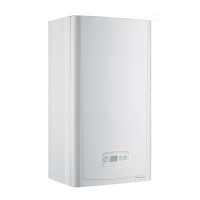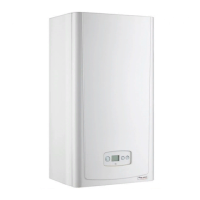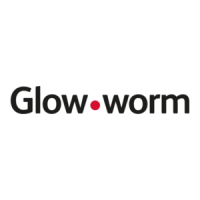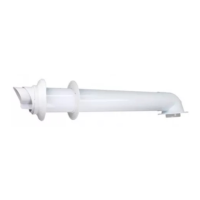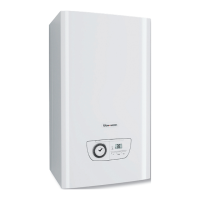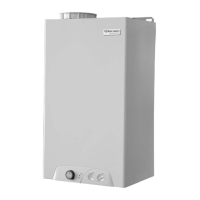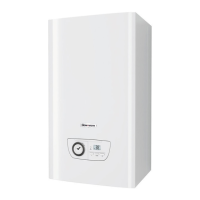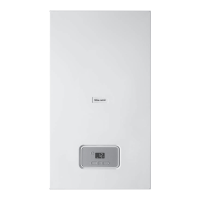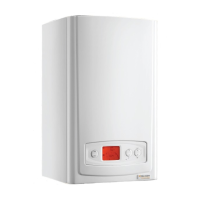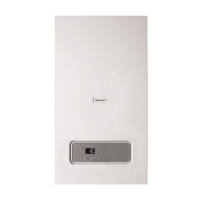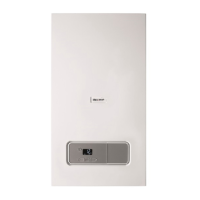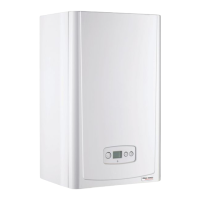
Do you have a question about the Glow-worm Flexicom 12hx and is the answer not in the manual?
| Boiler Type | Combi |
|---|---|
| Mounting | Wall-mounted |
| Output | 12 kW |
| Fuel Type | Natural Gas |
| Efficiency | 89.1% |
| Dimensions (HxWxD) | 700 x 390 x 280 mm |
| Weight | 30 kg |
| ERP Rating | A |
| CH Output (kW) | 12 kW |
| DHW Output (kW) | 12 kW |
| Efficiency (%) | 90% |
| Condensing | Yes |
| Central Heating Flow Rate | 12 l/min |
| Hot Water Flow Rate | 12 l/min |
| Warranty | 2 years |
Critical safety advice for operation and handling.
Gas category, safety regulations, electrical supply, handling.
Installation requirements for GB and IE.
Rules for gas supply and hot water systems.
Key design features, operation, and frost protection.
Recommendations for maintenance and part replacement.
Lift weight, connections, electrical, gas, and performance data.
Visual representation of boiler size and connections.
Diagram of internal water flow and components.
Suitable locations and zones for installation.
Required spacing and considerations for timber frames.
Ventilation requirements for the boiler.
Various horizontal flue configurations and part numbers.
Options for vertical and twin flue installations.
Minimum distances for horizontal flue terminals.
Siting requirements for vertical flue terminals.
When and how to install a terminal guard.
General points for open vented and sealed systems.
Procedures for system flushing and inhibitor use.
Supply, pump, feed, and vent requirements.
Specific requirements for DHW cylinders, double feed indirect coil type.
Compliance with BS standards for sealed systems.
Fitting and specifications for safety valve and expansion vessel.
Requirements for pressure gauges and DHW cylinders.
Procedures for system water top-up and filling.
Checking contents and site suitability.
Using the template and drilling flue holes.
Fitting the wall hanging bracket.
Steps for lifting and securing the boiler.
Requirements for connecting the gas supply.
Requirements for connecting water systems.
Methods for discharging condensate.
Permitted lengths and fall requirements.
Components for horizontal telescopic flue kits.
Accessories for extending and routing flues.
Instructions for rear and side flue installation.
Steps for fitting the flue assembly and securing joints.
Permitted lengths and fall requirements for standard flues.
Components for standard horizontal flue kits.
Accessories for standard flue installations.
Instructions for fitting standard rear and side flues.
Steps for cutting and assembling flue ducts.
Permitted lengths for direct rear telescopic flues.
Steps for fitting the direct rear flue assembly.
Max lengths, bends, and fall requirements for vertical flues.
Assembling and supporting vertical flue sections.
Fitting weather collars for roof terminals.
Final steps for vertical flue assembly and sealing.
Diagrams showing different twin flue layouts.
Accessories for twin flue installations.
Clearances for twin flue terminals.
Connecting twin flue adaptor and pipes to boiler.
Finalizing horizontal and vertical twin flue terminals.
Overcoming site issues with plume management.
Earthing, wiring, and isolator requirements.
Connecting the pump supply cable.
Securing the cartridge and performing electrical checks.
Checks before commissioning, flushing, gas tightness.
Automated steps for boiler ignition.
Approximate gas rates for different models.
How to adjust boiler output in kW increments.
Testing radiators, flow control, and system differential.
Instructing the user and completing records.
Visual checks before servicing.
Combustion and gas rate checks.
Checking and cleaning the spark electrode.
Cleaning and inspecting the burner assembly.
Removal and maintenance of igniter and silencers.
Procedures for removing the fan/gas valve assembly.
Cleaning debris from the heat exchanger.
Servicing condensate trap and checking casing seals.
Performing CO2 checks and adjustments.
Initial checks before diagnosing faults.
Understanding and accessing fault codes and memory.
Key for wiring colours and main wiring diagram.
Step-by-step guide for diagnosing boiler issues.
Causes and descriptions for specific fault codes.
States and possible causes for heating mode.
Level 1 diagnostic codes and their parameters.
Safety, isolation, and general replacement steps.
Steps for removing and refitting the gas valve.
Removing and refitting the burner assembly.
Servicing the condensate trap and thermistor.
Replacing return thermistor and draining heat exchanger.
Steps to remove the heat exchanger.
Refitting the burner and tightening sequence.
Accessing and replacing the user interface and main PCB.
Locating the fuse and removing the installer interface cartridge.
List of spare parts with part numbers and descriptions.
Safe lifting and handling techniques for the boiler.
Advice on positioning and handling in roof spaces.
Compliance with EC directives and standards.
